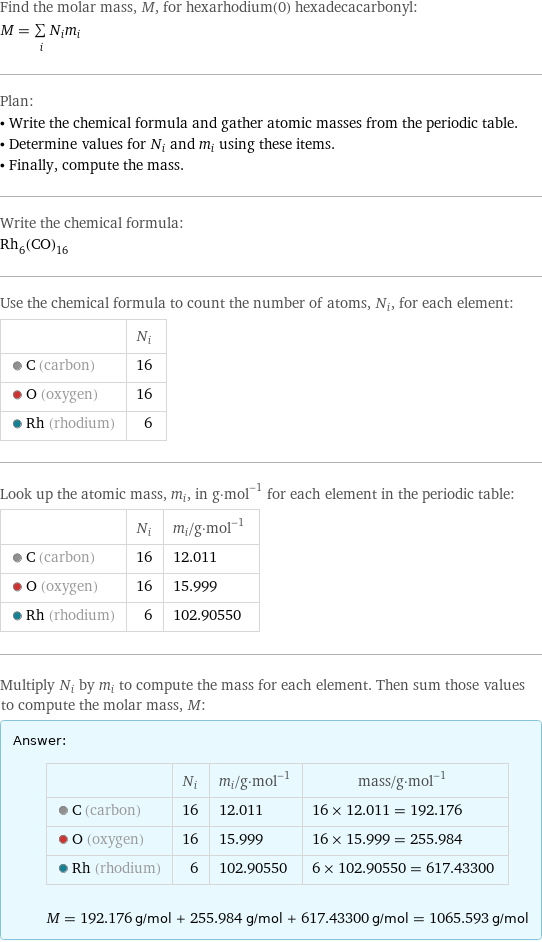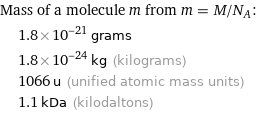Input interpretation

hexarhodium(0) hexadecacarbonyl | molar mass
Result

Find the molar mass, M, for hexarhodium(0) hexadecacarbonyl: M = sum _iN_im_i Plan: • Write the chemical formula and gather atomic masses from the periodic table. • Determine values for N_i and m_i using these items. • Finally, compute the mass. Write the chemical formula: Rh_6(CO)_16 Use the chemical formula to count the number of atoms, N_i, for each element: | N_i C (carbon) | 16 O (oxygen) | 16 Rh (rhodium) | 6 Look up the atomic mass, m_i, in g·mol^(-1) for each element in the periodic table: | N_i | m_i/g·mol^(-1) C (carbon) | 16 | 12.011 O (oxygen) | 16 | 15.999 Rh (rhodium) | 6 | 102.90550 Multiply N_i by m_i to compute the mass for each element. Then sum those values to compute the molar mass, M: Answer: | | | N_i | m_i/g·mol^(-1) | mass/g·mol^(-1) C (carbon) | 16 | 12.011 | 16 × 12.011 = 192.176 O (oxygen) | 16 | 15.999 | 16 × 15.999 = 255.984 Rh (rhodium) | 6 | 102.90550 | 6 × 102.90550 = 617.43300 M = 192.176 g/mol + 255.984 g/mol + 617.43300 g/mol = 1065.593 g/mol
Unit conversion

1.0656 kg/mol (kilograms per mole)
Comparisons

≈ 1.5 × molar mass of fullerene ( ≈ 721 g/mol )

≈ 5.5 × molar mass of caffeine ( ≈ 194 g/mol )

≈ 18 × molar mass of sodium chloride ( ≈ 58 g/mol )
Corresponding quantities

Mass of a molecule m from m = M/N_A: | 1.8×10^-21 grams | 1.8×10^-24 kg (kilograms) | 1066 u (unified atomic mass units) | 1.1 kDa (kilodaltons)

Relative molecular mass M_r from M_r = M_u/M: | 1066